Hi All,
When some one refers to a Gillette NEW or Gillette OLD, to what are they referring?
When some one refers to a Gillette NEW or Gillette OLD, to what are they referring?

So, do you use an old or new Gillette? How long have you been wet shaving? Head over to the Hall of Fame and introduce yourself, if you already haven't. And WELCOME to B&B.
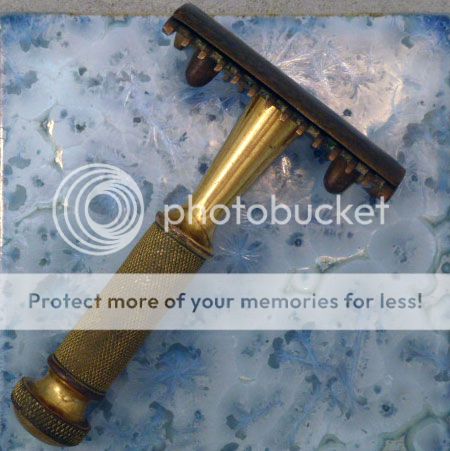
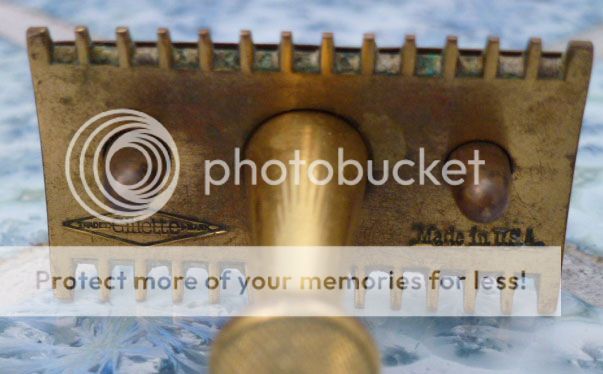
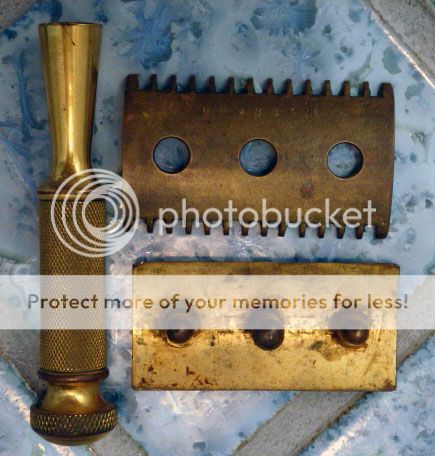
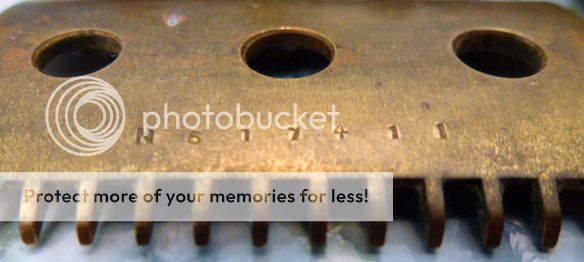
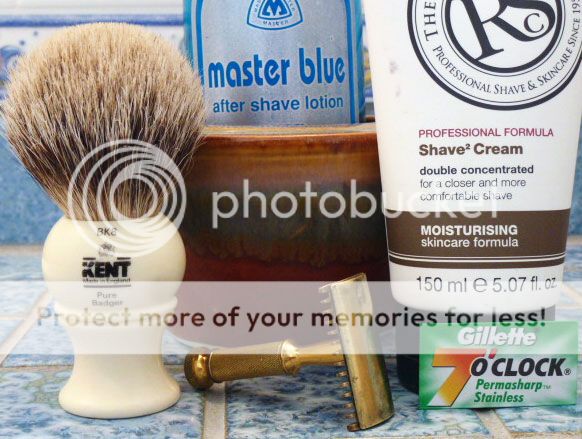
SuperbThe first three main generations of designs that Gillette produced are now referred to with the names that come from the company advertising from each era:
1. Old Type (1903 - 1928/29) – Old razors had baseplate and top plate that were smoothly curved. Earlier models had a long stud that screwed into the knob of the razor handle and later models had a short stud that screwed into the top of the handle. These were open comb razors with short and long combs.
Double rings were first. Stopped in c. 1906 after introduction of Single ring.
Single rings were made from 1906 to 1921. The Old Type Single Ring razor comes in many models. The way to tell them apart is by the case design not the actual razor since the razor almost all look the same to some degree. From 1907 to 1929 they all looked somewhat identical. The cases (i.e. sets) were the only distinguishing features as an indicator. Some of the set names were Standard, Combination, Pocket Editions, etc. Both Double Ring and Single Ring have tube handles. There are also Old ball end handles and ABC handles. Standard refers to a set and not a specific razor, and all Standard Sets after 1906 and before 1921 had Single Rings.
# 102 has a thinner cap/head and #102a (beginning 1921) has a thicker cap.
Single rings have the serial number on the shaft of the knob that runs inside the handle to the cap. Standard old types have the serial number on the combed blade base.
The first 25,000 razors produced had no serial numbers, but "Pat" appl for” notation and they were the Double Ring style. The first serial numbers were on the opening knob barrel and then moved to the razor head. My 1908 has SN on the barrel my 1918 on the head (not sure change date).
Serial numbers were discontinued in August 1921 but I think the razor should still have some type of "Pat" number reference. Also the "Pat" number on the lower handle changed then to Jan 13, 1920 from November 5, 1904. Also the caps after 21 are the 102A style which are thicker.
2. New Improved (1920 - 1929) - The New Improved razor was a three piece design with a curved top plate but the open comb base plate had a flat section across the middle. The top had the studs like the Old on either end to secure the blade. Perhaps the New Improved line's strongest point is that it gives a better shave than the Old Type razors.
Gillette introduced the New Improved head design in 1921, and continued to produce variants until 1929. Most had a long stem and a plate that was fixed to the handle, but there were also specialty models with a short stem and a free plate, like the Old Type. All were made of brass, and various models were available with silver or gold plating. The main variations were from handle designs and cases. The main patent for the New Improved razor was US 1,328,024, filed February 3, 1917 and issued January 13, 1920.
Gillette announced the New Improved razor privately in the May 5, 1921 issue of The National Association of Retail Druggists Journal and other trade publications. These publications usually would have been delivered by the cover date, giving retailers some lead time to order the new products and sell off older ones. The private announcement detailed the sets that would be available, including the Richwood, Bostonian, New Standard, Big Fellow, Aristocrat, Milady Decolletee, Tuckaway, Chesterfield, Chippendale, Traveler, and De Luxe.
Gillette also cited plans to reduce the Old Type razors from $5 to $3.50 while leaving retail margins approximately the same. Finally, Gillette also announced new $3, $2.50, and $1 Old Type sets to appear within three months. By introducing new and improved razors at a price comparable to the existing lineup while reducing the price of its time-worn but still popular products, Gillette was better positioned to face the increased competition which was sure to follow the expiration of its 1904 patents that same year, in 1921. On May 16, 1921, the earliest known advertisements for the New Improved razors appeared in newspapers.
The “New Standard” was a proper name given to a line of Gillette razors with the "New Improved" head. Sets marked with New Standard on the lid liner are sets with a New Improved razor produced from 1921-1928.
These razors have a serial number inside the head which makes to possible to date them. There were no serial numbers from October, 17, 1927 through August 28, 1928.
The New Standard was the basic model for the New Improved line with many "specials,” and named models made over time. The individual razors in the line were essentially the same, but varied in detail. Some were gold, some were silver, and some had highly ornate filigree. What distinguished them was the packaging, which ranged from simple leather cases to rich wooden boxes, such as used on the Richwood.
There are roughly a dozen models in the New Improved line, some of which are legendary. They were better-made than the Old Type models; this, together with the fact they were legitimately more expensive (plated in silver or gold), and that some four million were produced in 1921 alone, makes them readily available today, and their initial value and quality were high, so people took better care of them.
Some examples are:
The Bostonian is a New Standard in a metal presentation case, and the platform on which the razor is displayed rises or descends when the case is opened or closed.
The Algonquin is a New Standard in an embossed, metal presentation case, the razor is triple-plated, and the pattern from the handle is duplicated on the TTO knob.
3. New (1929/30 - late '30s – or 1940) – This razor is a copy of the New Improved, but was designed for the new blades with the slotted middle. There was no need for the cap studs due to the new blade design.
The "New" head design was introduced in 1929 as a replacement for both the Old and New Improved models and continued with variations until 1940. There were three main variations of the new head design: Long Comb, Short Comb, and DeLuxe. All these razors were three-piece double-edge designs. Most had short threading, although some DeLuxe razors had long threading.
The first New razors had ball-end handles left over from Old Type production and later used bar handles in both small and large diameter with the large being more common. The Long Comb was produced early on with the Short Comb model being the last production model of the New. Production ended around 1938 with the advent of the Tech.
One B&B’er said, “From observation I believe the long comb was made for a much longer period of time than the short comb and the New DeLuxe. It seems to me that LC heads outnumber SC heads by well over 2 to 1. This would indicate that the LC head was made for a longer period of time and in much greater numbers than the short comb head.”
“Originally the SC New used a different cap with larger corner nibs, this cap only worked with the SC New. Later the SC New had the same cap as the LC New and New Deluxe, this cap design was also used with the later Tech heads. I believe Gillette switched from copper to brass for the caps. The SC heads that I've come across are mostly copper.”
Although the reissue patent dates from early 1930, this NEW LC wasn't made before May 1932. That's when the last patent was issued, and they started stamping the pat. #s. Before that, they only had the trademark and Made in USA.
The "New" razors were initially manufactured without any patent numbers. Later examples are stamped with three patents:
· REISSUE PAT. NO. 17567" (US0RE017567). This US patent was originally numbered 1658435 (US1658435) and was issued to Henry J. Gaisman of Auto Strop, as part of his development of the Probak razor and blade brand. This patent covered the studs used by the Probak and Goodwill razors, and the rails used by the NEW. Filed 6 Oct 1923; issued 7 Feb 1928; reissue application 19 Nov 1929; reissued 14 Jan 1930.
· PAT. NO. 1815745" (US1815745). Filed by Ralph Thompson for Gillette, this patent covers the reinforced corners of the NEW cap. Filed 25 Apr 1929; refiled 3 Dec 1930; issued 21 July 1931.
· PAT. NO. 1858316" (US1858316). Filed by Ralph Thompson for Gillette, this patent covers blade modifications to accommodate the reinforced corners of the NEW cap. Filed 30 Jul 1930; issued 17 May 1932.
The Gillette NEW De Luxe razors were similar to the NEW razors, but with a flat bottom on the head which made for a slightly heavier head weight. The difference between a typical NEW and NEW DeLuxe would be 3-5 grams. The DeLuxe version of the NEW was made at two different times: ca. 1930 with serial numbers but without patent numbers and ca. 1935 with patent numbers but without serial numbers.

Yeah, you're not kidding!Superb [emoji106]1:
The first three main generations of designs that Gillette produced are now referred to with the names that come from the company advertising from each era:
1. Old Type (1903 - 1928/29) Old razors had baseplate and top plate that were smoothly curved. Earlier models had a long stud that screwed into the knob of the razor handle and later models had a short stud that screwed into the top of the handle. These were open comb razors with short and long combs.
Double rings were first. Stopped in c. 1906 after introduction of Single ring.
Single rings were made from 1906 to 1921. The Old Type Single Ring razor comes in many models. The way to tell them apart is by the case design not the actual razor since the razor almost all look the same to some degree. From 1907 to 1929 they all looked somewhat identical. The cases (i.e. sets) were the only distinguishing features as an indicator. Some of the set names were Standard, Combination, Pocket Editions, etc. Both Double Ring and Single Ring have tube handles. There are also Old ball end handles and ABC handles. Standard refers to a set and not a specific razor, and all Standard Sets after 1906 and before 1921 had Single Rings.
# 102 has a thinner cap/head and #102a (beginning 1921) has a thicker cap.
Single rings have the serial number on the shaft of the knob that runs inside the handle to the cap. Standard old types have the serial number on the combed blade base.
The first 25,000 razors produced had no serial numbers, but "Pat" appl for notation and they were the Double Ring style. The first serial numbers were on the opening knob barrel and then moved to the razor head. My 1908 has SN on the barrel my 1918 on the head (not sure change date).
Serial numbers were discontinued in August 1921 but I think the razor should still have some type of "Pat" number reference. Also the "Pat" number on the lower handle changed then to Jan 13, 1920 from November 5, 1904. Also the caps after 21 are the 102A style which are thicker.
2. New Improved (1920 - 1929) - The New Improved razor was a three piece design with a curved top plate but the open comb base plate had a flat section across the middle. The top had the studs like the Old on either end to secure the blade. Perhaps the New Improved line's strongest point is that it gives a better shave than the Old Type razors.
Gillette introduced the New Improved head design in 1921, and continued to produce variants until 1929. Most had a long stem and a plate that was fixed to the handle, but there were also specialty models with a short stem and a free plate, like the Old Type. All were made of brass, and various models were available with silver or gold plating. The main variations were from handle designs and cases. The main patent for the New Improved razor was US 1,328,024, filed February 3, 1917 and issued January 13, 1920.
Gillette announced the New Improved razor privately in the May 5, 1921 issue of The National Association of Retail Druggists Journal and other trade publications. These publications usually would have been delivered by the cover date, giving retailers some lead time to order the new products and sell off older ones. The private announcement detailed the sets that would be available, including the Richwood, Bostonian, New Standard, Big Fellow, Aristocrat, Milady Decolletee, Tuckaway, Chesterfield, Chippendale, Traveler, and De Luxe.
Gillette also cited plans to reduce the Old Type razors from $5 to $3.50 while leaving retail margins approximately the same. Finally, Gillette also announced new $3, $2.50, and $1 Old Type sets to appear within three months. By introducing new and improved razors at a price comparable to the existing lineup while reducing the price of its time-worn but still popular products, Gillette was better positioned to face the increased competition which was sure to follow the expiration of its 1904 patents that same year, in 1921. On May 16, 1921, the earliest known advertisements for the New Improved razors appeared in newspapers.
The New Standard was a proper name given to a line of Gillette razors with the "New Improved" head. Sets marked with New Standard on the lid liner are sets with a New Improved razor produced from 1921-1928.
These razors have a serial number inside the head which makes to possible to date them. There were no serial numbers from October, 17, 1927 through August 28, 1928.
The New Standard was the basic model for the New Improved line with many "specials, and named models made over time. The individual razors in the line were essentially the same, but varied in detail. Some were gold, some were silver, and some had highly ornate filigree. What distinguished them was the packaging, which ranged from simple leather cases to rich wooden boxes, such as used on the Richwood.
There are roughly a dozen models in the New Improved line, some of which are legendary. They were better-made than the Old Type models; this, together with the fact they were legitimately more expensive (plated in silver or gold), and that some four million were produced in 1921 alone, makes them readily available today, and their initial value and quality were high, so people took better care of them.
Some examples are:
The Bostonian is a New Standard in a metal presentation case, and the platform on which the razor is displayed rises or descends when the case is opened or closed.
The Algonquin is a New Standard in an embossed, metal presentation case, the razor is triple-plated, and the pattern from the handle is duplicated on the TTO knob.
3. New (1929/30 - late '30s or 1940) This razor is a copy of the New Improved, but was designed for the new blades with the slotted middle. There was no need for the cap studs due to the new blade design.
The "New" head design was introduced in 1929 as a replacement for both the Old and New Improved models and continued with variations until 1940. There were three main variations of the new head design: Long Comb, Short Comb, and DeLuxe. All these razors were three-piece double-edge designs. Most had short threading, although some DeLuxe razors had long threading.
The first New razors had ball-end handles left over from Old Type production and later used bar handles in both small and large diameter with the large being more common. The Long Comb was produced early on with the Short Comb model being the last production model of the New. Production ended around 1938 with the advent of the Tech.
One B&Ber said, From observation I believe the long comb was made for a much longer period of time than the short comb and the New DeLuxe. It seems to me that LC heads outnumber SC heads by well over 2 to 1. This would indicate that the LC head was made for a longer period of time and in much greater numbers than the short comb head.
Originally the SC New used a different cap with larger corner nibs, this cap only worked with the SC New. Later the SC New had the same cap as the LC New and New Deluxe, this cap design was also used with the later Tech heads. I believe Gillette switched from copper to brass for the caps. The SC heads that I've come across are mostly copper.
Although the reissue patent dates from early 1930, this NEW LC wasn't made before May 1932. That's when the last patent was issued, and they started stamping the pat. #s. Before that, they only had the trademark and Made in USA.
The "New" razors were initially manufactured without any patent numbers. Later examples are stamped with three patents:
· REISSUE PAT. NO. 17567" (US0RE017567). This US patent was originally numbered 1658435 (US1658435) and was issued to Henry J. Gaisman of Auto Strop, as part of his development of the Probak razor and blade brand. This patent covered the studs used by the Probak and Goodwill razors, and the rails used by the NEW. Filed 6 Oct 1923; issued 7 Feb 1928; reissue application 19 Nov 1929; reissued 14 Jan 1930.
· PAT. NO. 1815745" (US1815745). Filed by Ralph Thompson for Gillette, this patent covers the reinforced corners of the NEW cap. Filed 25 Apr 1929; refiled 3 Dec 1930; issued 21 July 1931.
· PAT. NO. 1858316" (US1858316). Filed by Ralph Thompson for Gillette, this patent covers blade modifications to accommodate the reinforced corners of the NEW cap. Filed 30 Jul 1930; issued 17 May 1932.
The Gillette NEW De Luxe razors were similar to the NEW razors, but with a flat bottom on the head which made for a slightly heavier head weight. The difference between a typical NEW and NEW DeLuxe would be 3-5 grams. The DeLuxe version of the NEW was made at two different times: ca. 1930 with serial numbers but without patent numbers and ca. 1935 with patent numbers but without serial numbers.
3. New (1929/30 - late '30s – or 1940)
The "New" head design was introduced in 1929 as a replacement for both the Old and New Improved models and continued with variations until 1940. There were three main variations of the new head design: Long Comb, Short Comb, and DeLuxe. All these razors were three-piece double-edge designs. Most had short threading, although some DeLuxe razors had long threading.
The Gillette NEW De Luxe razors were similar to the NEW razors, but with a flat bottom on the head which made for a slightly heavier head weight. The difference between a typical NEW and NEW DeLuxe would be 3-5 grams. The DeLuxe version of the NEW was made at two different times: ca. 1930 with serial numbers but without patent numbers and ca. 1935 with patent numbers but without serial numbers.
Bear in mind that you will never see OLD or OLD Style on any Gillette packaging or advertisement. Once Gillette introduced the NEW and the NEW Improved models they pointedly called them that officially, and people just call the models older than those the OLDs.
1. Ball end.Would you mind naming these handles with the proper names? 6 have the general make-up of the Common Bar Handle, but I know they are not all CBH's.
View attachment 852998
I understand that there are other handles, such as the Silver version of no. 10, the Bostonian(Diamond), the Aristocrat(Bulldog), and probably others. I'd just like to use the proper vernacular.